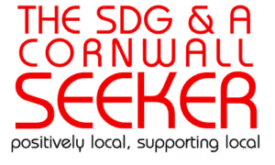Cultivating Creativity
I have been contemplating the notion of creativity. Creativity is a quality that applies to all of us, even though many would dispute this. More simply stated, each of us has the capacity to be creative in our own way simply because we are unique and have different ways of viewing the world. That said, creativity like anything else, is a muscle that needs to be exercised.
According to author and creativity guru Enkhuul, “Creativity is the ability to transcend traditional ways of thinking or acting, and to develop new and original ideas, methods or objects”. Or , more simply, as Albert Einstein believed, “Creativity is intelligence having fun.” Frankly, Einstein’s idea of creativity appeals to me!
You do not need to be an artist to be considered creative. You may, for example, be a chef who takes ordinary ingredients and combines them in a way that the food looks and tastes better. This is creative expression. Or you may be an architect who has a knack for thinking outside of the box when it comes to creating new homes, coming up with designs that are more environmentally suitable or fitting for the landscape. This too is creative expression. Or you may simply be a hard worker who discovers and implements new work processes which assist the flow of information or the manufacturing of a product.
Creativity is not limited to the arts; it applies to all aspects of life.
Fundamentally, creativity is taking what interests you and playing with it, expanding ideas in new ways, thinking beyond the boundaries of convention. Yes, for some, creativity will come naturally and for some of us it is something that may take time and effort. Regardless, it is an ability that each of us possess. Taking a creative stance also implies going above and beyond, not accepting status quo as a given, and looking for ways to improve on the way things are done. As such, exercising creativity breathes new life into us, our work, and our play.
Creativity goes beyond imagining: it’s about developing. If it’s an idea, you go out and do the research to prove it. If it’s a new process you try and test it to see if it works. If it’s an object, you build it.
The main catalyst for creativity is undoubtedly CURIOSITY. Curiosity provokes questions, forces individuals to look at things differently, leads to brainstorming and examining options. As each individual is unique, their way of perceiving the world is different from the person next to them. Hence, faced with the same circumstances, two individuals arrive at different conclusions and conceive of different ideas and solutions. In the simplest terms, this defines the creativity of each individual and their ability to contribute something unique to different issues.
So why is it that creativity is rarely expressed, in workplaces, in education, in life? Unfortunately, conformity rules. Research shows that humans are most creative in the age group 3 to 12 years. After that age, individuals do not lose their creativity, it is simply harnessed and subdued. This happens due to the educational systems we employ, growing up and assuming life responsibilities, and abiding by the boundaries dictated by the societies in which we live. In many ways we beat the creativity out of people because creativity often imagines change and change is not something people love.
What stops us from being creative?
The is no doubt that being creative is a personal choice. Life gets in the way as does burnout, perfectionism, life pressures. In addition, as William Childs writes, “One of the biggest obstacles to creativity is the fear of failure. Many people avoid taking risks, trying new things, or expressing their opinions because they are afraid of making mistakes, being rejected, or facing criticism.” The question for each of us to ask ourselves is how does creativity nurture our growth and expand our life experience?
Exercising Your Creative Muscles
Under the right conditions, the muse (creative inspiration) will visit each and every one of us in its own unique way.
Challenging conformity and complacency, how do you embrace your creative soul, nurture it and begin to exercise your creative muscles. What is clear is that to allow your creativity to blossom, you need to create space for it. Here are my suggestions:
1. Examine what creativity means for you. There are so many ways to express yourself. Yes, it may be in the arts but it may also be in the design of something you are passionate about. Recognize what your natural attributes and strengths are and bring these to the forefront in approaching your life, your work, your play, your calling. Approach your life your way and what you know to be true in your heart/intuition.
2. Create a space for yourself dedicated to nurturing your creativity. This can be a corner or a room, but a place that is for only YOU. Include some special objects, pictures, quotes, books, candles or whatever inspires you in this space, whatever has meaning to you and supports your essence.
3. Spend time in this space regularly, preferably daily, if only for 15 minutes per day. Prohibit others from using this space. Remember this space is explicitly for nurturing your creativity.
4. Once in your space, park your responsibilities, obligations and ‘to do’s’ at the entranceway. Be still. Breathe. Open your heart. Create space. This is where creativity enters.
5. If an idea emerges, begin to tell a story about it. Describe it, colour it, envision it, speak it. Once out of your space, share it with others, allow them to embellish if you wish without allowing them to distract you from your ideas. Be prepared for the naysayers. Remind yourself that you do not have to listen.
6. Engage curiosity. As the story, the idea grows, ask questions, consider options, look at ideas from a 360-degree perspective. Walk around it, poke, prod, explore. Write the ideas down or doodle them if you prefer. Have an idea journal to record your musings. (Remember to make the ‘tact explicit’ by putting your ideas on paper not leaving them in your head).
7. Finally, once your ideas are recorded, pause and reflect. Meditate. Walk away. Come back, re- read, reflect some more, keep polishing the ideas.
William Childs wrote that the 4 pillars of creativity are:
— wonderment, the ability to see the world with a degree of awe and possibility,
— courage, the willingness to stand up and stand out and take a different approach,
— authenticity, the willingness to appreciate your unique voice, skills and attributes and what you are able to contribute, and
— curiosity, the willingness to search for and examine options.
Final Thoughts
I admit to being a rule breaker and a passionate creative thinker. Whether this has been through writing, my artistic expression or in running my business, following the crowd has never appealed to me. That is not to suggest that compliance is wrong, it is simply a choice.
I offer this column simply as a reminder that YOU are a creative soul; creativity lies within YOU. Never doubt this. It is your choice as to whether you exercise it and how you express it.
Creatively Yours,
Betty Healey
Your thoughts and strategies are always welcome and if you care to share, you can reach me at: [email protected]





